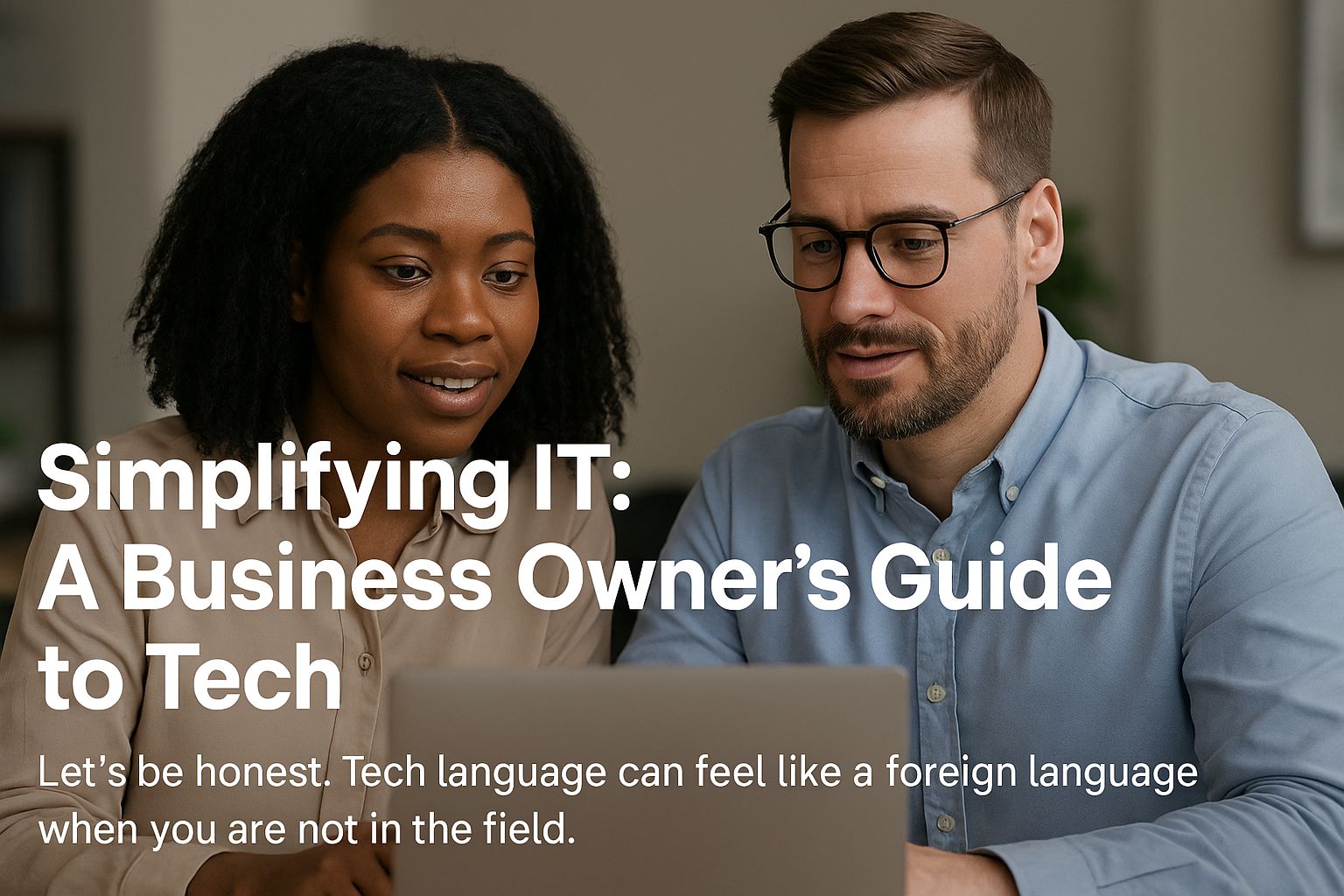Simplifying IT: A Business Owner’s Guide to Tech Language

Simplifying IT: A Business Owner’s Guide to Tech Language
Let’s be honest. Tech language can feel like a foreign language when you are not in the field. If you have ever sat in a meeting with an IT consultant and nodded through a conversation you did not fully understand, you are not alone. But understanding the basics of tech terminology can help you make better decisions, avoid confusion, and even save your business time and money.
This guide breaks down some of the most common IT terms and explains what they really mean for you and your team.
1. You need stronger endpoint protection
What it means
Your team is likely using multiple devices to work; laptops, tablets, and phones. Each one is a possible entry point for cybercriminals. Endpoint protection is a layer of security that protects these devices from threats like viruses or unauthorized access.
Why it matters
If even one device is compromised, your entire business data could be at risk.
2. Let us migrate your infrastructure to the cloud
What it means
Move your data, applications, and storage from local computers or servers to the internet using secure platforms like Google Cloud, Microsoft Azure, or AWS.
Why it matters
Cloud solutions allow your team to work from anywhere, access real time backups, and reduce reliance on expensive hardware.
3. We detected a phishing attempt
What it means
A scammer sent a fake email or message that looks real to trick someone into clicking a harmful link or giving away sensitive information.
Why it matters
Phishing is one of the most common ways businesses get hacked. Educating your team and using good email filters can prevent serious security breaches.
4. We will run a vulnerability assessment
What it means
This is like a digital health check. It involves scanning your systems to find weak spots or areas where hackers could gain access.
Why it matters
Catching vulnerabilities early means you can fix them before something goes wrong. It is proactive, not reactive.
5. You need multi factor authentication
What it means
This is a security method where users must provide two or more pieces of evidence to log in, such as a password and a code sent to their phone.
Why it matters
It adds an extra layer of protection and greatly reduces the risk of unauthorized access.
6. Let us implement a zero-trust security model
What it means
This approach assumes no one and no device is safe by default. Everyone must prove who they are before accessing company systems, even within the office network.
Why it matters
It is one of the most effective modern security practices, especially for businesses with remote teams or sensitive data.
7. We recommend a managed IT service plan
What it means
Rather than waiting for things to break, you work with a tech partner who constantly monitors, updates, and maintains your systems.
Why it matters
It saves time, prevents downtime, and helps small businesses stay protected and productive with fewer issues.
Final Thoughts
Understanding IT terms should not feel like decoding a secret language. When you are equipped with the right knowledge, you can confidently lead your business through digital decisions and avoid costly mistakes. At Serian Technologies, we are here to make those conversations easier, clearer, and more productive so you can focus on growing your business while we take care of the tech.
Let us be your guide to smarter and simpler IT.
Contact us today to get started.
